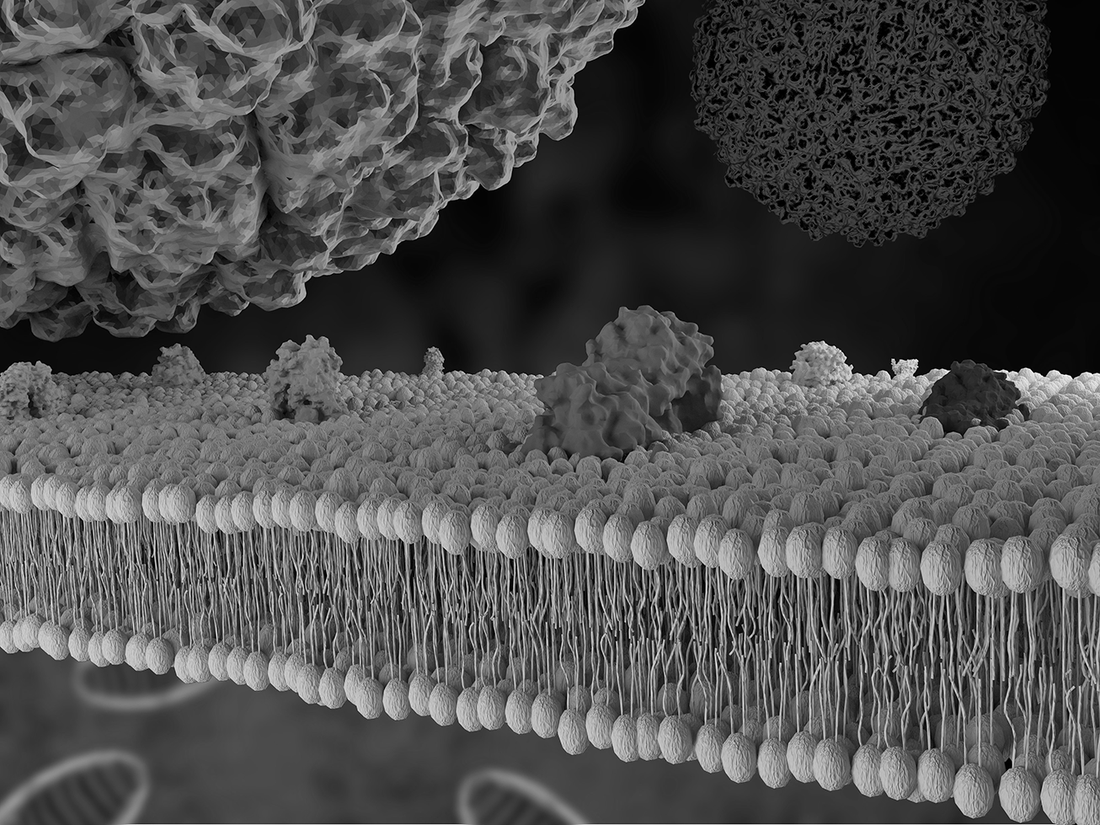
Activating Longevity Genes: The Link Between NAD and Sirtuins
Understanding NAD: The Backbone of Cellular Metabolism

The Flow of Nutrients Inside a Cell – Digital Art
Introduction to NAD
Nicotinamide adenine dinucleotide (NAD) is a pivotal coenzyme present in all living cells. It plays a fundamental role in cellular metabolism, existing in two forms: NAD+ (oxidized) and NADH (reduced). This critical coenzyme is central to the process of cellular energy production, allowing cells to transfer electrons in metabolic reactions. This electron transfer is a crucial step in the production of ATP, the body's primary energy currency. As metabolic reactions occur, NAD+ accepts electrons, converting to NADH, which then donates electrons within the electron transport chain to aid in ATP synthesis [1].
The Dual Role of NAD in Metabolism
NAD is not only vital for energy production but also for many other cellular processes. It participates in DNA repair and the regulation of gene expression and cellular stress responses, acting as a cofactor for enzymes such as sirtuins and PARPs that maintain genetic stability and link to the body's aging processes [1]. The coenzyme enables metabolic flexibility which is the body's ability to switch between using carbohydrates and fats as energy sources. This versatility is critical for maintaining energy balance and supporting various physiological functions. The decline in NAD+ levels as part of the aging process can influence these metabolic and repair pathways, suggesting the potential of NAD+ modulation in enhancing healthspan.
NAD in Energy Metabolism
NAD plays a critical role in the conversion processes central to cellular energy production. In cellular respiration, NAD is a key component in both glycolysis and the citric acid cycle. During these processes, NAD+ is reduced to NADH as glucose is broken down, facilitating the transfer of electrons and the eventual synthesis of ATP [2]. This aspect of NAD's function is indicative of its role as an energy carrier within the cell, highlighting its necessity in sustaining cellular activities.
NAD and Metabolic Health
The importance of NAD extends into broader metabolic health, including its role in conditions such as diabetes, obesity, and cancer. Emerging research points to metabolic dysfunction, often linked with imbalances in NAD levels, as a contributing factor to these diseases. Advanced technologies such as metabolomics have helped delineate the connections between NAD+ levels and metabolic health, offering insights for potential therapeutic interventions aimed at restoring NAD+ balance to improve cellular and systemic health outcomes.
Implications of Declining NAD Levels
A natural decline in NAD+ levels with age adversely affects cellular energy production and repair mechanisms. This decline can lead to diminished capacity for DNA repair and stress response management, contributing to the aging process and age-related diseases. Several lifestyle factors such as diet, exercise, and supplementation can positively impact NAD+ levels, potentially mitigating age-related declines and supporting longevity and healthspan [1].
Conclusion
Understanding NAD's integral role across various metabolic pathways underscores its centrality in cellular metabolism, with far-reaching implications for cellular function and overall health. Enhancing the understanding of NAD's biological functions continues to hold promising potential in the development of novel strategies for disease prevention and health optimization.
Sirtuins: The Guardians of Cellular Health

Overview of Sirtuins and Their Critical Role
Sirtuins are a family of proteins that play multifaceted roles in regulating cellular homeostasis, metabolism, and longevity. They are often referred to as "guardians of the genome" because of their pivotal responsibility in maintaining cellular health and stability. Sirtuins depend on nicotinamide adenine dinucleotide (NAD+) to operate efficiently, which highlights their reliance on the cellular energy state to regulate various physiological processes. These proteins are evolutionarily conserved across a diverse range of organisms, signifying their fundamental importance.
Mechanism of Action: The Role of NAD+
Sirtuins require NAD+, a coenzyme present in all living cells, to function. As we age, the decline in NAD+ levels results in decreased sirtuin activity, which in turn affects various cellular processes, including DNA repair, metabolism, and stress resistance. NAD+ serves as a crucial cofactor for sirtuins, facilitating their ability to operate as molecular switches that govern cellular responses to energetic changes. Without sufficient NAD+, sirtuin activity wanes, leading to compromised cell function and increased susceptibility to age-related diseases.
Biological Functions of Sirtuins
Sirtuins are integral in regulating metabolic processes, enhancing DNA repair mechanisms, modulating inflammatory responses, and supporting mitochondrial functionality. They perform deacetylation, a process which involves the removal of acetyl groups from proteins, thereby influencing gene expression and protein interaction networks. The strategic regulation through deacetylation allows sirtuins to manage cellular responses to stress and mitigate damage, famously by controlling chromatin configuration and gene accessibility in the nucleus.
Discovery and Evolutionary Significance
The discovery of sirtuins traces back to early research where SIR2, the founding member, was identified in yeast. Leonard Guarente and his team at MIT highlighted the correlation between SIR2 gene activity and yeast longevity. This discovery underscored the protein’s evolutionary preservation across species, including humans, who possess seven sirtuin homologs. The evolutionary conservation of sirtuins hints at their universal roles in longevity and cellular integrity across different organisms.
Implications for Health and Longevity
As central regulators of cellular health, sirtuins promise substantial implications in combating age-related diseases and promoting healthier aging. Strategies to enhance or mimic sirtuin activity, such as NAD+ supplementation and caloric restriction, are under rigorous scientific investigation to potentially slow down the effects of aging. The modulation of sirtuin activity could inform therapeutic approaches for addressing metabolic disorders, neurodegenerative diseases, and inflammatory conditions associated with aging.
In summary, sirtuins represent an intriguing area of study with profound implications for understanding cellular aging and developing interventions for age-associated diseases. Continued research into their regulatory mechanisms and interactions with cellular metabolic pathways holds the potential for transformative advances in health and longevity.
Reference:
1. https://www.sciencedirect.com/topics/medicine-and-dentistry/energy-metabolism
2. https://www.ncbi.nlm.nih.gov/books/NBK546690/
